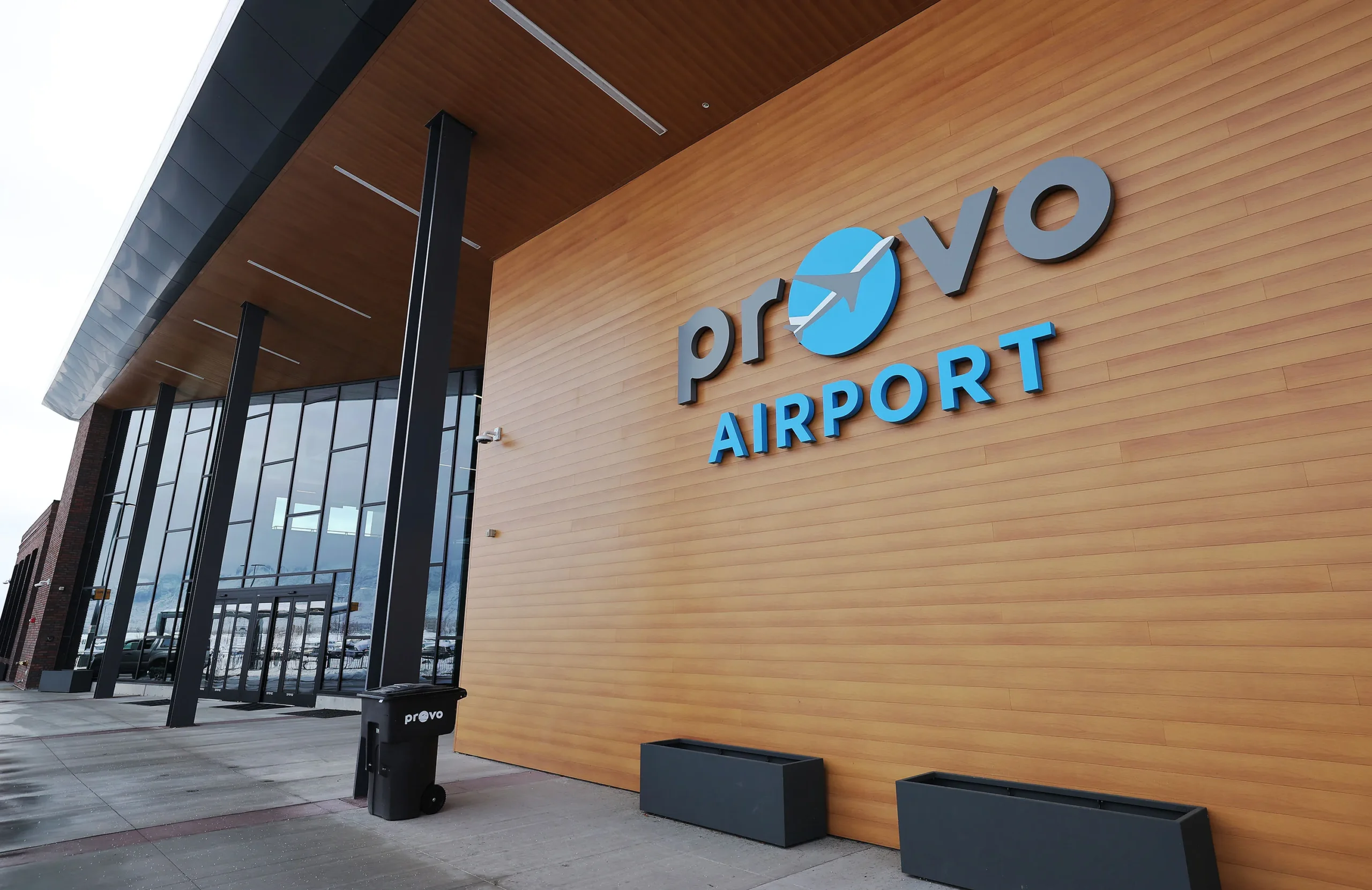For Utah travelers, the Provo Airport (PVU) has grown into an appealing option that balances convenience with affordability. With three airlines now offering service—American Airlines, Allegiant Air, and Breeze Airways—this small regional airport provides direct routes to several U.S. destinations, including major hubs like Dallas-Fort Worth and Phoenix Sky Harbor.
I recently flew from Provo to Dallas on Breeze Airways, and the experience gave me a clear picture of what passengers can expect. From parking and check-in to food options and boarding, here’s a detailed look at flying out of Provo.
Airlines and Routes Out of Provo
Currently, three carriers operate from PVU:
- American Airlines: Offers daily flights to Phoenix and three daily connections to Dallas-Fort Worth, linking passengers to international destinations.
- Breeze Airways: A Utah-based low-cost airline with routes to Dallas, Phoenix, California, Colorado, Washington, D.C., and more. Seasonal expansions, including Burbank and Las Vegas, are scheduled for 2026.
- Allegiant Air: A low-cost carrier flying to cities across the Western U.S., Orlando, Nashville, and other hubs, with some seasonal variations.
For a small airport, this is a solid lineup and a growing list of travel opportunities.
Parking and Accessibility
Provo Airport is less than five minutes from I-15, making it easily accessible for those driving in. Unlike large airports, parking is stress-free. A large lot sits directly in front of the terminal entrance, with prices set at $12 per day for long-term use. That is a much simpler process than dealing with satellite lots and shuttle buses at major airports.
If you are arriving in Provo, four rental car agencies—Hertz, Budget, A to B, and Rabbit Rentals—have counters just past the terminal exit.
A noted weakness of PVU is its limited public transit options. Only one UTA bus line serves the airport, with restricted hours and no Sunday service. Because of this, travelers with early morning flights, like mine at 7 a.m., need to rely on driving, rideshare, or drop-offs.
Check-in and Security Experience
PVU’s small size makes for a smooth arrival-to-gate transition. On my trip, I arrived around 5:45 a.m. for a 7 a.m. departure and found check-in counters open but virtually no line. American Airlines also has self-check-in kiosks for quick processing.
Security was equally easy. With only a few lanes, you can pass through in minutes on lighter days. I went through in less than two minutes, although the airport does caution passengers to arrive 90 minutes to two hours early, since backups can occur when multiple flights overlap.
There is a TSA PreCheck lane available, though in quieter moments it may not be separated from regular screening. Even so, PreCheck travelers still get their perks of keeping on shoes and avoiding laptop removal.
Inside the Terminal
The terminal is compact, with four departure gates currently in operation. The airport has plans for expansion, including potential international service in the future, but for now, the size makes navigation fast and simple.
Seating is plentiful, with outlets at counters and scattered throughout the gate areas. The setup is especially convenient for travelers looking to charge phones or laptops before a flight.
Food and drink are limited, but there’s one main restaurant, Guru’s Café, located inside. The menu includes breakfast burritos, sandwiches, coffee, and other quick options, all priced comparably to restaurants outside the airport. Unlike larger airports, you won’t face overinflated food prices. A convenience store and vending machines are also available for snacks, books, or small souvenirs.
For families, PVU provides a well-thought-out family lounge near Gate 2, complete with a mother’s room. Business travelers can take advantage of a designated business lounge with tables and workspace for getting things done before departure.
Boarding and Departure
Because the airport doesn’t have jetbridges at all gates, passengers often board via ramp across the tarmac. Only Gate 1 has a built-in jetbridge, which my Breeze Airways flight used. In winter months, it’s smart to keep a jacket handy if you’re boarding directly outside.
Once on board, the departure felt no different than flights from larger hubs—it was smooth, organized, and efficient. For a regional airport, it’s clear PVU has prioritized straightforward operations.
Pros and Cons of Flying from Provo
Pros:
- Easy parking directly in front of the terminal
- Stress-free check-in and fast security
- Smaller size means less walking and fewer crowds
- Affordable low-cost carriers with growing destinations
- Family- and business-friendly spaces
Cons:
- Limited food and drink options compared to large airports
- Public transportation access is minimal
- Flight schedules are less frequent than Salt Lake City International, making flexibility important
Who Should Consider Provo Airport?
PVU is ideal for Utah County residents and southern Salt Lake Valley travelers who would otherwise face an hour-long drive to SLC International. Families will appreciate the convenience and amenities like the family lounge, while business travelers benefit from the less-crowded experience and reliable Wi-Fi stations.
Those seeking a wide range of international flights or daily flexibility may find Salt Lake City a better fit, but for direct domestic routes, the convenience of Provo is a major draw.
Final Thoughts
Flying out of Provo Airport is refreshingly easy compared to the stress of larger hubs. On my Breeze Airways flight, it took less than 15 minutes from the curb to my gate—a rarity in today’s air travel world. While it doesn’t offer the sheer variety of destinations that bigger airports do, PVU makes up for it with accessibility, comfort, and affordable options.
